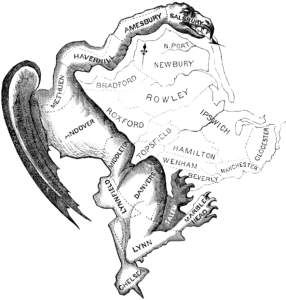 February 19, 2016 04:47 PM UTC
February 19, 2016 04:47 PM UTC
 As the Colorado Independent’s Marianne Goodland reports, a redistricting ballot measure that a “bipartisan coalition” of lawmakers and officials (more on that in a moment) have been threatening to introduce, only to be beaten back by intense criticism, is on the table once again:
As the Colorado Independent’s Marianne Goodland reports, a redistricting ballot measure that a “bipartisan coalition” of lawmakers and officials (more on that in a moment) have been threatening to introduce, only to be beaten back by intense criticism, is on the table once again:
Initiative 107 was filed this morning by former Speaker of the House Frank McNulty, a Highlands Ranch Republican, and former lawmaker Kathleen Curry, who was a registered Democrat for years until switching to unaffiliated in 2010.
The proposed ballot measure is the second effort by McNulty and others, including former Secretary of State Bernie Buescher, a Democrat, to change how the state draws the maps for Colorado’s seven congressional districts and 100 legislative seats.
The first attempt, submitted in November, immediately drew howls of protest from voting rights activists and minority groups who claimed the ballot measure would have disenfranchised minority voters…
As we discussed the last time this proposal surfaced last November, nobody really understands what is driving it–other than sour grapes that Republicans apparently still have stemming from the last redistricting and reapportionment round in 2011. You’ll recall that Republicans complained mightily that the process was being stacked against them as Democrats focused on competitive districts. The problem is., dire predictions from the GOP that the maps resulting from that process would shut them out of political power unfairly have not come to pass–as of today, Republicans have a one-seat majority in the congressional delegation, and the state legislature is split between a Democratic House and a Republican Senate.
So what’s the problem this ballot measure would try to solve? It’s anybody’s guess:
Sen. Jessie Ulibarri, a Commerce City Democrat, has been vocal and angry about the way the redistricting effort has been handled. He told The Colorado Independent this morning that he saw the latest version just last night, so there hasn’t been enough time to properly vet the draft with voting rights or minority groups.
“The entire proposal, in least in what I’ve seen, is designed to fail and to guarantee an outcome for partisan interest over the interests of communities,” he said. [Pols emphasis]
Hutchins reports that James Mejia, a Democrat who took withering fire from colleagues after signing on in support of the last version, has withdrawn from the campaign. The Republicans heading up the campaign as of this writing are former House Speaker Frank McNulty and longtime GOP operative Alan Philp, who most Democrats will rightly not trust any further than they can throw. That leaves former House Speaker Mark Ferrandino and former Secretary of State Bernie Buescher to try to sell this plan to Democratic voters, assuming they themselves remain on board as the initiative proceeds.
One interesting theory we’ve heard about why this initiative is being pushed so hard this year involves another proposal from Republican strategist Josh Penry to increase the threshold to pass constitutional amendments from a simple majority to 55%. Much like the passage of the “single subject rule” not long after passing the Taxpayer’s Bill of Rights created a situation where TABOR could not be easily repealed, locking a bad redistricting plan into the constitution before raising the bar on passing amendments makes a lot of sense.
But for everyone else–Democrats for whom the current process worked fine, reasonable Republicans who can see today it was fine for them too, and above all voters being asked to make big changes to solve a contrived “problem”–none of it makes any sense.
Subscribe to our monthly newsletter to stay in the loop with regular updates!
Comments